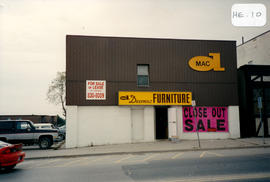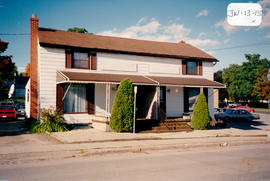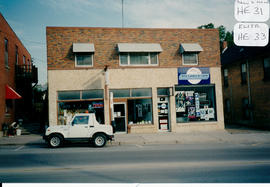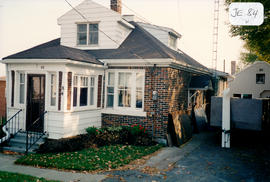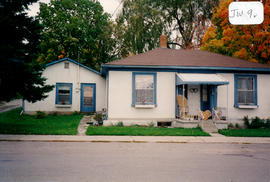10 Holland Street East - The Holland Theatre
- CA BWGPL GJ-HB-2017-03-24-04
- Item
- 1995
Part of George Jackson fonds
The building located at 10 Holland St. East in this 1995 photo is not the original structure on this property. That building was destroyed in the big fire of 1871 and the space stood empty for many years. A man from Aurora hired Art and Leonard Saint in 1936 to build a movie theatre on the vacant lot. It was to be a winter and fall project after they finished building the Post Office on Barrie Street. The Holland Theatre, as it became known, was completed in 1937. It had a basement, a front projection room upstairs, a cement foundation, cement floors and red, block, tile walls. All of the quicklime that was used was hauled in from Hagerville and made into mortar in the basement. The mortar contained camel, goat, and cow hair which came from Colles’ Leather business in Aurora. A steel, suspended lath was plastered in the ceiling. The roof was flat and sloping and the stage was at the rear. The owners in the 1940’s and early 1950’s were Mr. Rees and Mr. Hobberlin. George Carson bought the theatre after WWII. The structure later housed many businesses, including a Deemac Furniture store. The building is currently (2014) unoccupied. (1, 2)
George Jackson

